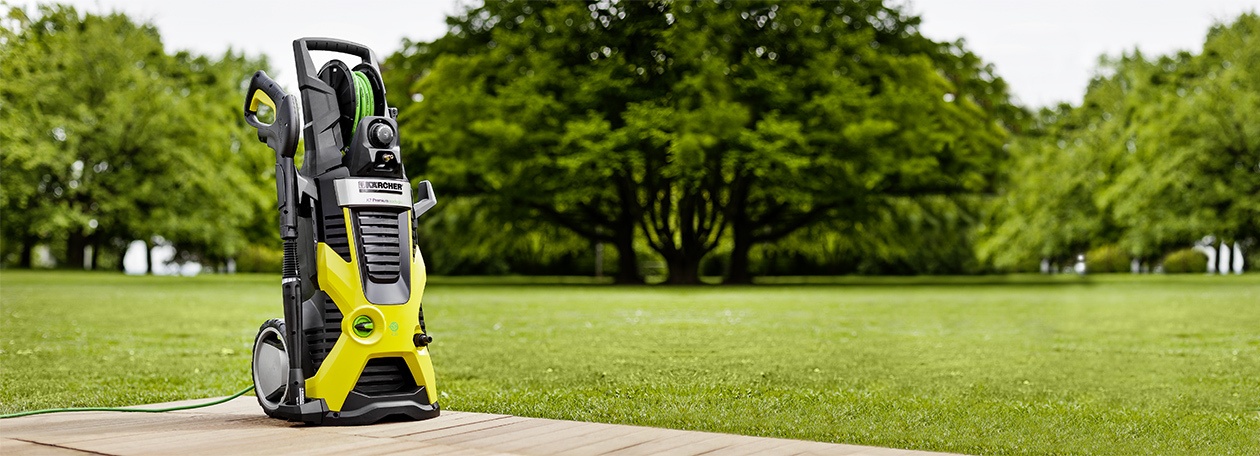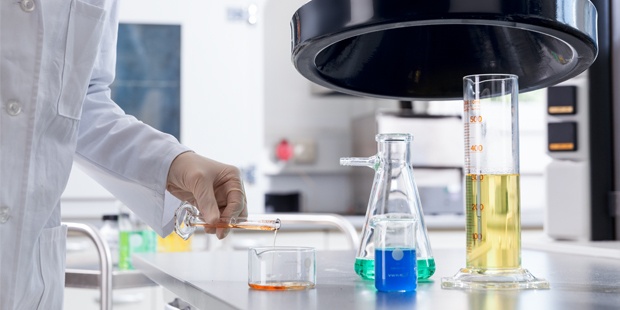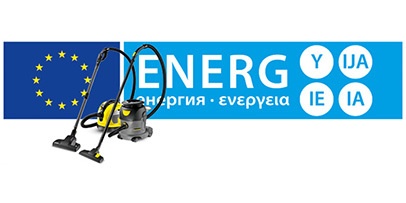Product responsibility
The observance of environmental aspects has for many years been an essential part of product development at Kärcher. Product-related environmental protection is therefore an essential part of our systematic environmental management. It is not just the manufacturing and use of our products which should be environmentally friendly, but also our machines themselves. This is why Kärcher places high demands on the environmentally-compatible design of its products, systems and services.

Our goal: constant improvement in environmental compatibility.
Every generation of Kärcher cleaning appliances should be more effective and environmentally-friendly. This aim is based on two key thoughts; we have the best chance of reducing the environmental impacts of our activities through environmentally friendly products and that an environmentally compatible machine is often also economical.
Environmental protection in the product development process
In our quest for sustainability, the route is our focus. Kärcher has been keeping this focus for decades with exemplary consistency. In the development of new products, Kärcher is guided by the term "life cycle thinking". This means that the entire product life cycle is taken into consideration right from the planning phase. All phases of the product life are analysed in terms of environmental aspects in the development process and optimised to reduce the impact on the environment as much as possible.
Raw material production
Our products are made from high-quality raw materials. Good materials significantly extend the service life of a Kärcher cleaning appliance and thereby protect the environment.
Parts manufacturing
When it comes to environmental matters we work closely with our suppliers. The absence of harmful substances and effective environmental management are priorities for us.
Production
Our production processes have a low environmental impact. However, we have committed ourselves to constant improvement through the use of innovative processes and an endeavour to have even less of an impact on the environment. Examples of such processes are; heat recovery, water reclamation, solar energy, etc.
Distribution
Where possible we use environmentally-friendly transport methods, such as rail, for transporting our machines.
Use
The properties of Kärcher products are also constantly being improved. Innovative solutions reduce water and energy consumption as well as dust and noise emissions.
Repair
Ease of repair is also considered right from the design stage. Our mutliple service centres provide competent repair worldwide.
Recycling and disposal
Easy disassembly and the selection of suitable materials enable good recycling of old devices. Kärcher cleaning appliances are generally up to 90% recyclable.
Product compliance
Legal and customer-specific requirements regarding Kärcher products are increasing significantly worldwide. This is why we systematically observe all legal and customer-specific requirements worldwide during the development of a new product.
- Environmental requirements in the specification document: We test in an environmental checklist how our machines can be made even more environmentally friendly.
- Environmental requirements in the supply chain: In order to systematically pass on these requirements to our suppliers we have our own Kärcher standards for environmentally-friendly product design.
Examples of best practice in environmental protection with Kärcher products
For Kärcher, incorporating environmental protection into the products is of great importance. Our stakeholders have great expectations of our machines, which we want to meet, we also strive for excellence in the field of ecology. This includes ensuring that our products are energy and resource efficient and that we keep the environmental impact of our machines to a minimum. These two reasons constantly spur us on to develop and improve our products with the environment in mind.
Our eco! ranges
Our eco!ogic and eco!efficiency product ranges are great examples of successful environmental design within our products. They have a wide variety of environmentally-friendly product properties.
Environmental information.
REACH
We follow the requirement to supply information in compliance with §33. Immediately after publication of the first candidate list on 28 October 2008, we contacted our suppliers to obtain the required information. We respond promptly to additions to the candidate list.
Some of the substances of very high concern (SVHC) mentioned in the candidate list are used for various purposes, mainly DEHP as plasticisers for plastic articles. These plasticisers may still be contained in the products we supply, e.g. electric cables, hoses, wheels, handles and similar parts and assemblies. These substances do not constitute any risk to health and the environment when used properly. These substances are used in compliance with the statutory regulations.
We can already confirm that Kärcher cleaning agents do not contain any of the substances mentioned in the current candidate list.
Should you require further information, please contact us.

ErP Ecodesign Directive
For information on EU Regulation 666/2013 regarding ecodesign requirements for vacuum cleaners, Appendix 1, point 2(b) on information to be provided by manufacturers, please contact your local Kärcher service partner.
The EU energy label for vacuum cleaners.
What Kärcher has long since demonstrated with its existing vacuum cleaners is now European law: cleaning efficiently with less power. The EU energy label, in effect since 1 September 2014, limits the nominal power of dry vacuum cleaners connected to mains power to a maximum of 1,600W. Every device sold in Europe must have the EU energy label.


